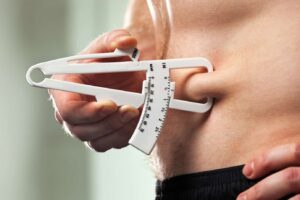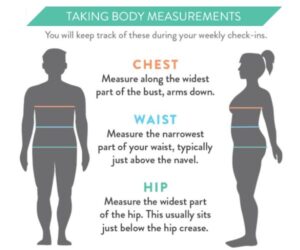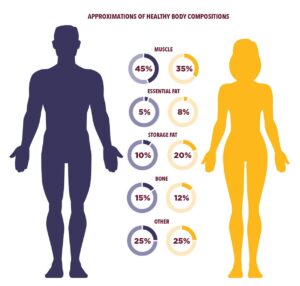Fitness
BODY COMPOSITION: HEALTH & FITNESS SECRETS
Body composition encompasses the proportions of fat, bone, and muscle within the human body, serving as a pivotal gauge of overall health and fitness. This metric offers insight into the distribution of fat and muscle mass, a crucial factor in evaluating individual well-being. Notably, individuals sharing identical weight and height measurements may harbor disparate health risks contingent upon their respective body fat compositions.
Fat within the body fulfills essential functions, including energy provision, organ insulation, and hormone regulation. However, an excess of body fat precipitates a spectrum of health complications, such as diabetes, cardiovascular ailments, and certain cancers. Consequently, monitoring body composition proves more illuminative than mere weight tracking, as it reveals fluctuations in fat and muscle mass unapparent on conventional scales.
Various techniques exist for assessing body fat, including skinfold measurements, hydrostatic weighing, and bio-electrical impedance. Skinfold measurement, in particular, emerges as a practical and reasonably accurate method, offering predictions of body fat percentage with a margin of error hovering around 3%. Moreover, although the Body Mass Index (BMI) commonly indicates weight status in adults, it lacks direct insight into body fat levels, thus requiring complementing with other assessment methods to achieve heightened accuracy.
Body Composition Test
There exist several techniques for measuring body composition, each varying in accuracy and complexity. These methods include:

- Skinfold Assessment: Utilizing skinfold calipers to gauge skinfold thickness at different body sites, offering an estimate of body fat percentage.
- DEXA Scan: Employing dual-energy X-ray absorptiometry (DEXA) to precisely measure bone density, fat mass, and lean body mass.
- Body Circumference: Measuring specific body circumference points to approximate body fat percentage.
- Hydrostatic Weighing: Also termed underwater weighing, this method estimates body composition by assessing body volume and residual lung volume.
- Bioelectrical Impedance Analysis (BIA): Analyzing the resistance of body tissues to electrical currents to determine body composition.
- Air Displacement Plethysmography: Utilizing air displacement, such as with the BOD POD GS, to derive body density and measure body composition.
- Total Body Counting and Neutron Activation: Direct methods provide accurate measurements of body composition but are less commonly used due to their complexity and limited availability.
While these techniques offer estimations of body composition, they come with varying levels of accuracy and limitations. It’s crucial to acknowledge that autopsy remains the sole definitive method for the most precise measurement, albeit impractical for routine assessment.
Body composition scale
Body composition scales represent devices engineered to furnish a thorough analysis of an individual’s body composition, encompassing metrics such as body fat percentage, muscle mass, hydration levels, and bone density. Employing diverse technologies such as bioelectrical impedance analysis (BIA), these scales ensure accurate measurement of these parameters. They have garnered popularity among those keen on monitoring their body composition for health and fitness objectives.
In contemplating a body composition scale, it is imperative to consider factors like the measurement range, connectivity options (e.g., Bluetooth for seamless progress tracking on smart devices), weight capacity, and design attributes facilitating ease of interpretation. It merits attention that while body fat scales aspire to estimate body fat, muscle, and water percentages and often integrate with health and fitness applications, scholarly discourse persists regarding their precision.
An array of brands offers an assortment of body composition scales featuring functionalities such as multi-user support, compatibility with various devices and applications, and customized modes to enhance the user experience. Prices may fluctuate depending on the brand and the features offered. It behooves users to peruse reviews diligently, deliberate on the metrics they wish to gauge, and seek out any clinical trials validating the efficacy of a particular scale before making a purchasing decision.
What is the ideal frequency for assessing body comp?
The frequency of body composition assessments varies according to individual objectives and situations. Typically, individuals engaged in fitness endeavors or weight management are advised to conduct measurements every 4–6 weeks. This interval permits adequate time to observe alterations in body fat percentage and muscle mass, while also affording a frequent evaluation to monitor progress and fine-tune dietary and exercise regimens as necessary. Nonetheless, it is crucial to factor in personal inclinations, motivational factors, and the precise goals of each individual when deciding the optimal frequency for body composition evaluations.
Read also: Weight Bench Essentials: Building Strength and Stamina
The Advantages of Regular Assessment
Regularly assessing body composition yields numerous advantages that offer unique insights into health and fitness progression:
- Objective Evaluation: Regular measurements of body composition provide an objective method for monitoring advancements toward health and fitness objectives, furnishing more precise feedback than solely relying on subjective feelings.
- Holistic Feedback: Through frequent monitoring of body composition, individuals can obtain comprehensive feedback concerning alterations in fat mass, muscle mass, and overall body composition. This enables adjustments in dietary habits, exercise routines, and lifestyle choices.
- Health Awareness: Continuously tracking body comp fosters heightened awareness of one’s current health status beyond mere weight or BMI assessments. It reveals the distribution of fat and muscle mass within the body, which is pivotal for grasping overall health conditions.
- Motivation and Accountability: Regular assessments act as motivational aids by showcasing progress or areas necessitating improvement. They instill a sense of accountability, driving individuals towards accomplishing their health and fitness goals.
- Tailored Health Plans: Analysis of body comp aids in tailoring health plans by furnishing precise data on fat percentage, muscle mass, and other constituents contributing to overall well-being.
- Informed Decision-Making: Consistent monitoring of body comp empowers individuals to make well-informed decisions regarding nutrition, exercise regimens, and lifestyle alterations, thereby striving for optimal health outcomes.
In essence, routine tracking of body composition offers a comprehensive overview of health status, facilitates goal pursuit, fosters motivation, and steers personalized health strategies toward enhanced well-being.
How Body Comp Measurement Aids in Weight Loss Efforts
Employing body composition measurements can prove invaluable in supporting weight loss endeavors by furnishing nuanced insights that transcend mere tracking of body weight. Here’s how integrating body composition analysis can bolster weight loss initiatives:

- Distinguishing Fat and Muscle Alterations: Body comp assessment empowers individuals to discern between changes in fat mass and muscle mass. This differentiation holds paramount significance, as the objective of effective weight loss often involves shedding fat while preserving or augmenting muscle mass.
- Enhanced Progress Monitoring: Although diverse factors like water retention, muscle development, and fat reduction may influence fluctuations in body weight, measuring body comp provides a more precise way to monitor progress toward reducing body fat percentage and enhancing overall body composition.
- Tailored Approaches: Insight into body comp facilitates the customization of weight loss strategies to suit individual requirements. By monitoring shifts in fat mass and muscle mass, individuals can adapt their nutritional intake, exercise regimes, and lifestyle practices more adeptly to attain desired body composition objectives.
- Motivation and Accountability: Regular body composition assessments can serve as motivational catalysts by showcasing tangible advancements in fat reduction and muscle enhancement. They foster a sense of accountability, aiding individuals in adhering to their weight loss aspirations and tracking advancements over time.
- Comprehensive Evaluation: Body comp analysis furnishes holistic feedback on the efficacy of weight loss endeavors. It imparts insights into the distribution of fat and muscle within the body, guiding modifications in dietary patterns, physical activity routines, and other lifestyle elements to optimize outcomes.
In essence, incorporating body comp assessments into weight loss journeys yields a more intricate and precise appraisal of progress, enables tailored strategies, bolsters motivation, and delivers comprehensive feedback to refine weight loss outcomes effectively.
Strategies to Enhance Body Composition
Here are some strategies for enhancing body composition:

- Nutrition: Emphasize a diet abundant in fruits, vegetables, whole grains, lean proteins, and healthy fats to foster muscle growth and diminish fat. Research suggests that high-protein diets correlate with greater gains in lean muscle mass.
- Exercise: Integrate regular physical activity into your routine, particularly weightlifting and resistance training, to bolster muscle mass and diminish body fat. High-intensity interval training (HIIT) has demonstrated efficacy in refining body composition.
- Mindful Eating: Cultivate mindfulness during meals to regulate portion sizes, reduce overall calorie intake, and opt for healthier food selections. Studies indicate that mindful eating is associated with a lower body mass index and improved body composition.
- Supplements: While maintaining a balanced diet and engaging in regular exercise are paramount, certain supplements like whey protein, creatine, and branched-chain amino acids (BCAAs) can aid in muscle growth, recovery, and performance. Nonetheless, it’s imperative to seek guidance from a healthcare professional before commencing any supplement regimen.
- Sleep and Stress Management: Prioritize sufficient sleep, effective stress management, and hormonal equilibrium, as they significantly influence body composition. Attaining adequate and quality sleep, managing stress levels, and regulating hormones can positively impact body composition.
- Realistic Goal Setting: Establish attainable objectives and maintain patience throughout the journey, as realistic expectations are vital for sustainable progress in refining body composition. Celebrate milestones and incremental advancements to sustain motivation.
- Weight Training: Integrate weight training sessions into your regimen to stimulate muscle growth, enhance fat burning, and boost strength. Ensure proper form, progressively increase weight load and diversify exercises targeting various muscle groups.
By adopting these strategies and integrating them into a balanced lifestyle, individuals can effectively enhance their body composition by reducing surplus fat, amplifying muscle mass, and elevating overall health and fitness levels.
How to Improve Body Composition, Based on Science
Effective Exercises for Enhancing Body Comp
Here are some exercises conducive to enhancing body composition:

- Dynamic Lunge Jumps: This dynamic movement entails taking sizable strides forward, engaging the abdominal muscles, descending into a deep lunge position, and then explosively propelling upwards through the front heel. It serves to elevate the heart rate, fortify the buttocks and thighs, and requires no specialized equipment.
- Abdominal Workouts: Sit-ups or crunches concentrate on strengthening the abdominal muscles, burning calories, and fostering muscle growth and definition. These exercises effectively enhance core strength and necessitate no equipment for execution.
- Weighted Squats: Incorporating weighted squats with a small handheld weight aids in fortifying leg muscles, refining posture, and amplifying lower body strength. This exercise involves descending to knee height while maintaining an upright torso posture.
- Pushups: A timeless bodyweight exercise, pushups target multiple muscle groups, including the chest, shoulders, triceps, and core. They facilitate the development of upper body strength and demand no equipment for implementation.
- Burpees: Burpees offer a comprehensive full-body workout by amalgamating squats, pushups, and jumps. They effectively enhance cardiovascular fitness, muscular strength, and endurance while engaging various muscle groups.
By integrating these exercises into a regular workout regimen, individuals can target diverse muscle groups, stimulate fat loss, promote muscle growth, and contribute to overall enhancements in body composition.
Drawbacks of Regular Body Composition Measurement
Regularly assessing body comp can present drawbacks alongside its advantages. One notable limitation lies in the potential peril of using these measurements as a yardstick for self-worth, fostering unhealthy behaviors and an undue fixation on external appearance. Furthermore, relying exclusively on body comp metrics may overlook other crucial facets of health and performance, as numerous significant indicators extend beyond mere body weight, body fat percentage, and muscle mass. It’s imperative to recognize that body composition measurements constitute just one facet of the complex interplay influencing health and performance, and fixating solely on these metrics may offer an incomplete perspective. Moreover, frequent monitoring and tracking of body weight and composition may cultivate an unhealthy preoccupation with these numerical values, potentially inducing stress and having detrimental effects on mental well-being.


